I. INTRODUCTION
Between 1962 and 1971, the United States Air Force sprayed approximately 107 million pounds of herbicides in South Vietnam for the purpose of defoliation and crop destruction. During the course of this operation, hundreds of thousands of u.s service personnel and millions of Vietnamese were exposed to the chemicals in the air, water, and soil and through food raised on contaminated farms. Agent orange is known to affect immune system, reproduction, nervous system, and changing steroid hormone levels. Most studies on the adverse health effects induced by herbicide/dioxin have been focused on American veterans, whereas there are few studies concerning the relationship between dioxin and health effects in Vietnamese. Since 2002, we have been continuously researching the dioxin and health in Vietnam. Recently, we have focused the steroid hormone as an early indicator of dioxin-induced health effects [1, 2, 3], The aim of this study is to evaluate the endocrine-disrupting effect of dioxin levels on adrenal steroid hormones in children from 1 to 7-year-old children in a previous herbicide-exposed regions in Vietnam.
II. MATERIALS AND METHODS
Three regions, namely Phu Cat, Binh Dinh Province and Bien Hoa, Dong Nai provincs (hot-spots) and Kim Bang, Ha Nam province (non-exposed region) were selected for study. Breast milk samples were obtained from lactating mothers aged 20 to 30 years from both regions between 2008 and 2011, who had given birth to their children aged from 4 to 16 weeks. In the first cohort study, in 2011 saliva samples from 3-year-old children and in 2013 and 2015, blood samples from grown-up 5 and 7-year- old children were collected in the morning each time in Phu Cat and Kim Bang. Finally, 78 children (34 from Phu Cat region and 44 from Kim Bang region) participated in this cohort study. In the second cohort study, since 2011 saliva samples from 1-year-old children and in 2013 and 2015, saliva and blood samples from grown-up 3 and 5-year- old children were collected in the morning each time in Bien Hoa and Kim Bang. Finally, 52 children (26 from Bien Hoa region and 26 from Kim Bang region) participated in this cohort study.
Three salivaly hormones (cortisol, cortisone, dehydroepiandrosterone (DHEA)) and 6 serum hormones (cortisol, cortisone, 17-OH- progesterone [p4], progesterone, androstenedione [A-dione], testosterone) were determined by liquid-chromatography,7 tandem mass spectrometry (LC-MS/MS); dioxin levels in breast milk were measured by gas-chromatography-high resolution mass spectrometry (GC-HRMS).
III. RESULTS AND DISCUSSION
Dioxin levels in breast milk were siginificantly higher in hot-spot than non- sprayed region. In the first cohort study, on comparison of steroid hormones in saliva of 3-year-old children between two regions, DHEA was siginificantly lower in female of hot-spot than those in non-exposed region, while other steroid hormones showed no siginificant difference. On comparison of steroid hormones in serum of 5-year-old children between two regions, testosterone showed siginificantly lower concentrations in both sexes of hot-spot rather than those in non-exposed region. On comparison of steroid hormones in serum of 7-year-old children between two regions, progesterone and A-dione showed siginificantly higher concentrations in both sexes of hot-spot rather than those in non-exposed region, while testosterone showed siginificantly lower concentrations in both sexes of hot-spot rather than those in non-exposed region (table 7). On the relationship between dioxin levels in breast milk and steroid hormones in serum of 5-year-old children, testosteiTone showed significantly negative relationships of both sex. On relationship between dioxin levels in breast milk and steroid hormones in serum of 7-year-old children, progesterone and A-dione showed significantly positive relationships of both sex and testosterrone showed significantly negative relationships only in male {table 2).
In the second study, age-related change in DHEA, cortisol and testosterone levels are given in figure 1. Levels of DHEA increased from 1 year of age to 3 years of age, and decreased from 3 years of age to 5 years of age in Bien Hoa. Levels of testosterone decreased from 3 years of age to 5 years of age in the hotspot district, but increased from 3 years of age to 5 years of age in the non-sprayed district.
Our recent study showed dioxins effected the synthesis of dehydroepiandrosterone in three-year-old Vietnamese children [2], From this study, we could confirm dioxin affected some steroid hormones till seven-year-old children. Dioxin exposure through breast milk might reflect the body burden of fetus and suppose a critical period of dioxin exposure to disrupt endocrine at least in the childhood. Levels of testosterone decreased from 3 years of age to 5 years of age in the hotspot district, but increased from 3 years of age to 5 years of age in the non-sprayed district.
IV. ACKNOWLEDGEMENTS
We would like to thank all the participants in Phu Cat, Bien Hoa and Kim Bang. This study was supported by the grants from the Japan Society for the Promotion of Science (Grant-in-Aid for Scientific Research, (B) No. 15H05285.
Table 1. Comparison of steroid hormones in children between Phu Cat and Kim Bang
|
|
| Hotspot | Non-sprayed | p-value |
|
|
| (F= 15, M = 19) | (F = 27, M = 17) | |
| Year | Hormone | GM | GM | |
|
| Cortisol (ng/mL) | 0.44 | 0.48 | 0.872 |
| Cortisone (ng/mL) | 3.02 | 3.02 | 0.997 | |
| 5 years (serum) | DHEA (pg/mL) | 35.24 | 61.66 | 0.019 |
| Cortisol (ng/mL) | 49.29 | 41.70 | 0.156 | |
| Cortisone (ng/mL) | 13.61 | 17.83 | 0.073 | |
| 17-OH-P4 (pg/mL) | 222.93 | 140.38 | 0.057 | |
|
| Progesterone (pg/mL) | 47.01 | 51.77 | 0.439 |
| A-dione (pg/mL) | 89.54 | 67.80 | 0.176 | |
| Testosterone (pg/mL) | 18.99 | 42.98 | 0.0004 | |
| 7 years (serum) | Cortisol (ng/mL) | 45.91 | 49.76 | 0.723 |
| Cortisone (ng/mL) | 15.64 | 17.38 | 0.764 | |
| 17-OH-P4 (pg/rnL) | 335.67 | 431.76 | 0.351 | |
| Progesterone (pg/mL) | 248.68 | 168.89 | <0.0001< />pan> | |
| A-dione (pg/mL) | 215.40 | 129.14 | 0.028 | |
| Testosterone (pg/mL) | 20.81 | 47.54 | 0.003 | |
| Cortisol (ng/mL) | 0.45 | 0.29 | 0.229 | |
| Cortisone (ng/mL) | 2.92 | 2.43 | 0.437 | |
| DHEA (pg/mL) | 38.09 | 54.39 | 0.102 | |
| 5 years (serum) | Cortisol (ng/mL) | 33.29 | 40.74 | 0.937 |
| Cortisone (ng/mL) | 9.09 | 17.79 | 0.015 | |
| 17-OH-P4 (pg/mL) | 141.60 | 182.82 | 0.47 | |
| Progesterone (pg/mL) | 59.42 | 73.29 | 0.334 | |
| A-dione (pg/mL) | 94.00 | 57.57 | 0.068 | |
| Testosterone (pg/mL) | 19.61 | 58.85 | 0.0001 | |
| 7 years (serum) | Cortisol (ng/mL) | 42.14 | 41.46 | 0.462 |
| Cortisone (ng/mL) | 14.59 | 18.33 | 0.124 | |
| 17-OH-P4 (pg/mL) | 281.99 | 415.02 | 0.066 | |
| Progesterone (pg/mL) | 263.94 | 189.63 | 0.001 | |
| A-dione (pg/mL) | 149.43 | 84.40 | 0.041 | |
| Testosterone (pg/mL) | 23.00 | 109.62 | <0.0001< />pan> |
| Year | Hormone | TEQ total PCDDs | TEQ total PCDFs | TEQ total PCDDs/Fs | |||
| r | p | r | p | r | p | ||
| Cortisol | -0.09 | 0.561 | 0.03 | 0.834 | -0.03 | 0.868 | |
| Cortisone | 0.06 | 0.724 | 0.01 | 0.936 | 0.02 | 0.899 | |
| DHEA | -0.18 | 0.266 | -0.12 | 0.456 | -0.19 | 0.217 | |
| 5 years (serum) | Cortisol | 0.30 | 0.055 | 0.12 | 0.447 | 0.17 | 0.277 |
| Cortisone | -0.03 | 0.840 | -0.11 | 0.479 | -0.12 | 0.435 | |
| 17-OH-P4 | 0.42 | 0.005 | 0.32 | 0.037 | 0.42 | 0.006 | |
| Progesterone | -0.08 | 0.609 | -0.1 i | 0.475 | -0.06 | 0.700 | |
| A-dione | 0.34 | 0.026 | 0.18 | 0.262 | 0.25 | 0.117 | |
| Testosterone | -0.34 | 0.023 | -0.32 | 0.041 | -0.32 | 0.039 | |
| 7 years (serum) | Cortisol | -0.13 | 0.404 | 0.01 | 0.938 | -0.03 | 0.828 |
| Cortisone | -0.16 | 0.312 | 0.08 | 0.598 | 0.00 | 0.988 | |
| 17-OH-P4 | -0.13 | 0.399 | -0.09 | 0.593 | -0.17 | 0.296 | |
| Progesterone | 0.42 | 0.005 | 0.53 | 0.000 | 0.48 | 0.001 | |
| A-dione | 0.28 | 0.073 | 0.46 | 0.002 | 0.37 | 0.016 | |
| Testosterone | -0.30 | 0.054 | -0.20 | 0.196 | -0.27 | 0.087 | |
| Male 3 years (saliva) |
|
|
|
|
|
|
|
| Cortisol | 0.09 | 0.588 | 0.01 | 0.938 | 0.07 | 0.675 | |
| Cortisone | -0.12 | 0.499 | -0.05 | 0.759 | -0.09 | 0.590 | |
| DHEA | -0.18 | 0.307 | -0.27 | 0.117 | -0.22 | 0.202 | |
| 5 years (serum) | Cortisol | 0.11 | 0.524 | 0.13 | 0.443 | 0.14 | 0.414 |
| Cortisone | -0.23 | 0.179 | -0.24 | 0.153 | -0.22 | 0.204 | |
| 17-OH-P4 | 0.14 | 0.403 | 0.08 | 0.643 | 0.14 | 0.425 | |
| Progesterone | -0.06 | 0.719 | -0.21 | 0.226 | -0.13 | 0.439 | |
| A-dione | 0.39 | 0.018 | 0.35 | 0.036 | 0.40 | 0.017 | |
| Testosterone | -0.53 | 0.001 | -0.54 | 0.001 | -0.55 | 0.001 | |
| 7 years (serum) | Cortisol | 0.08 | 0.645 | 0.09 | 0.961 | 0.03 | 0.865 |
| Cortisone | -0.28 | 0.104 | -0.26 | 0.125 | -0.28 | 0.102 | |
| 17-OH-P4 | -0.23 | 0.177 | -0.33 | 0.048 | -0.30 | 0.071 | |
| Progesterone | 0.44 | 0.008 | 0.46 | 0.005 | 0.43 | 0.009 | |
| A-dione | 0.40 | 0.016 | 0.29 | 0.086 | 0.36 | 0.030 | |
| Testosterone | -0.58 | 0.0002 | -0.56 | 0.0004 | -0.55 | 0.0005 | |
 |
Fig 1. Age-related change in salivary DHEA, cortisol and testosterone levels between Bien Hoa and Kim Bang
(***p<0.001)< />>
Kido T1; Honma s1; Kido Y1; Oanh NTP1; Phuc HD1; Anh LT1; Oyama Y1 Maruzeni s2 Nishijo M2; Nakagawa H2; Manh HD3; Nhu DD4; Tung DV5 Viet NH6; Tan NM6 Hung NN6; Toan NV6; Minh NH7; Son LK7
1. Faculty of Health Sciences, Institute of Medical Pharmaceutical and Health Sciences, Kanazawa University, Japan
2. Department of Public Health, Kanazawa Medical University, Japan
3. Faculty of Chemical and Environmental Engineering, Lac Hong University, Vietnam
4. Ministry of Health, Vietnam
5. Viettiep Hospital, Vietnam
6. Hanoi Medical University, Vietnam
7. Environment Administration, Ministry of Natural Resources and Environment, Vietnam
Kido T1; Honma s1; Kido Y1; Oanh NTP1; Phuc HD1; Anh LT1; Oyama Y1 Maruzeni s2 Nishijo M2; Nakagawa H2; Manh HD3; Nhu DD4; Tung DV5 Viet NH6; Tan NM6 Hung NN6; Toan NV6; Minh NH7; Son LK7
1. Faculty of Health Sciences, Institute of Medical Pharmaceutical and Health Sciences, Kanazawa University, Japan
2. Department of Public Health, Kanazawa Medical University, Japan
3. Faculty of Chemical and Environmental Engineering, Lac Hong University, Vietnam
4. Ministry of Health, Vietnam
5. Viettiep Hospital, Vietnam
6. Hanoi Medical University, Vietnam
7. Environment Administration, Ministry of Natural Resources and Environment, Vietnam
REFERENCES
1. Kido T, Tung DV, Manh HD, Nhu DD, et al. (2013) Eur J Endocrinol 170, 131-139
2. Kido T, Honma s, Nhu DD , Manh HD, Tung DV, et al. (2015) Sci Total Environ 550, 248-255
3. Tung DV, Kido T, Honma s, Manh HD, Nhu DD, et al. (2016) Environ Sci Pollut Res 23.10922-10929
4. Anh LT, Kido T, Honma s, Manh HD, Koike I, et al. (2017) Sci Total Environ 607- 608, 32-41
5. Oanh NTP, Kido T, Honma s, et al. (2018) Sci Total Environ 640-1: 466-74




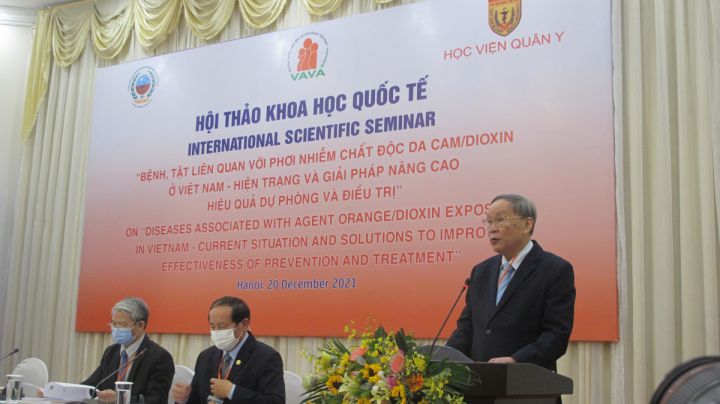

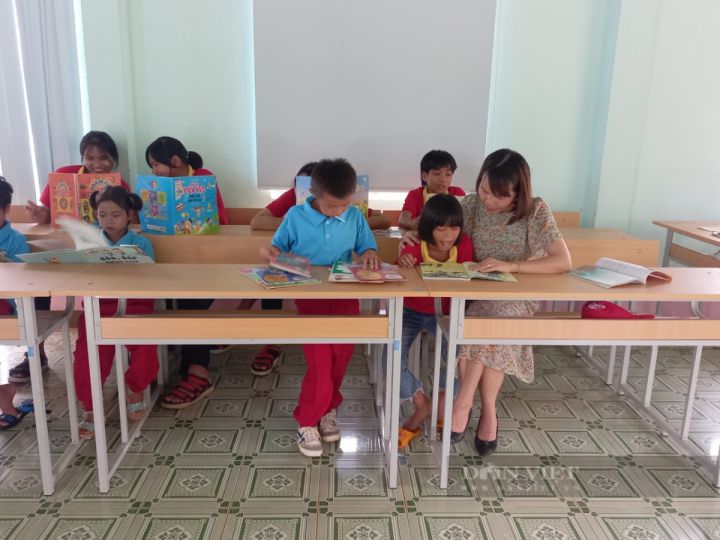
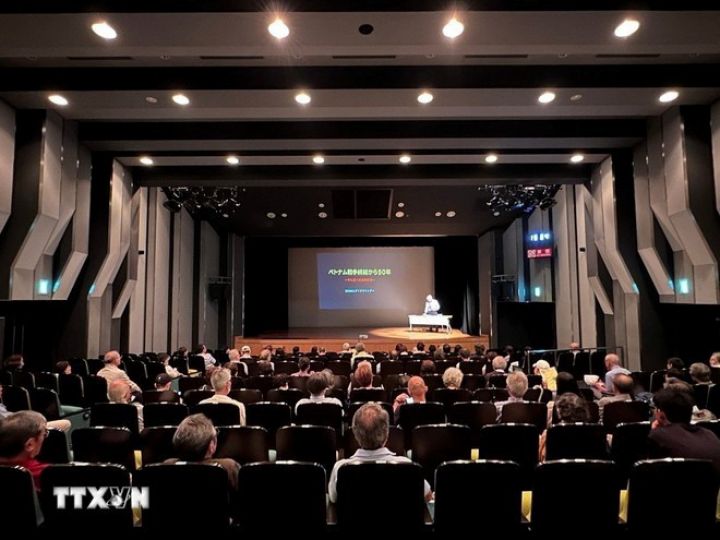















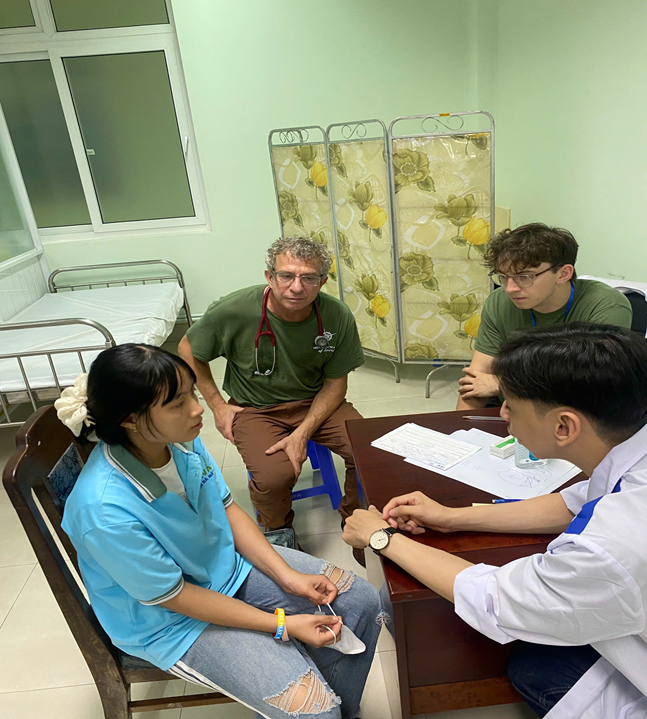
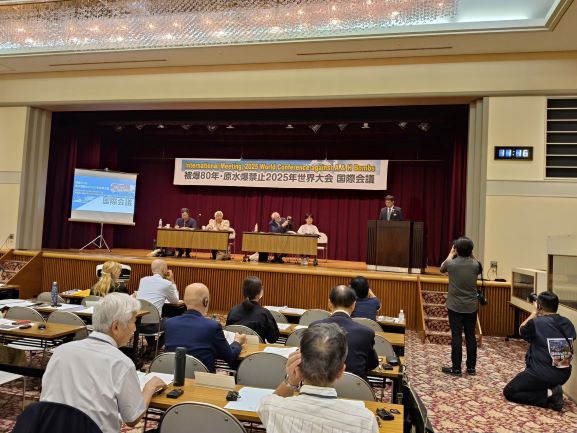
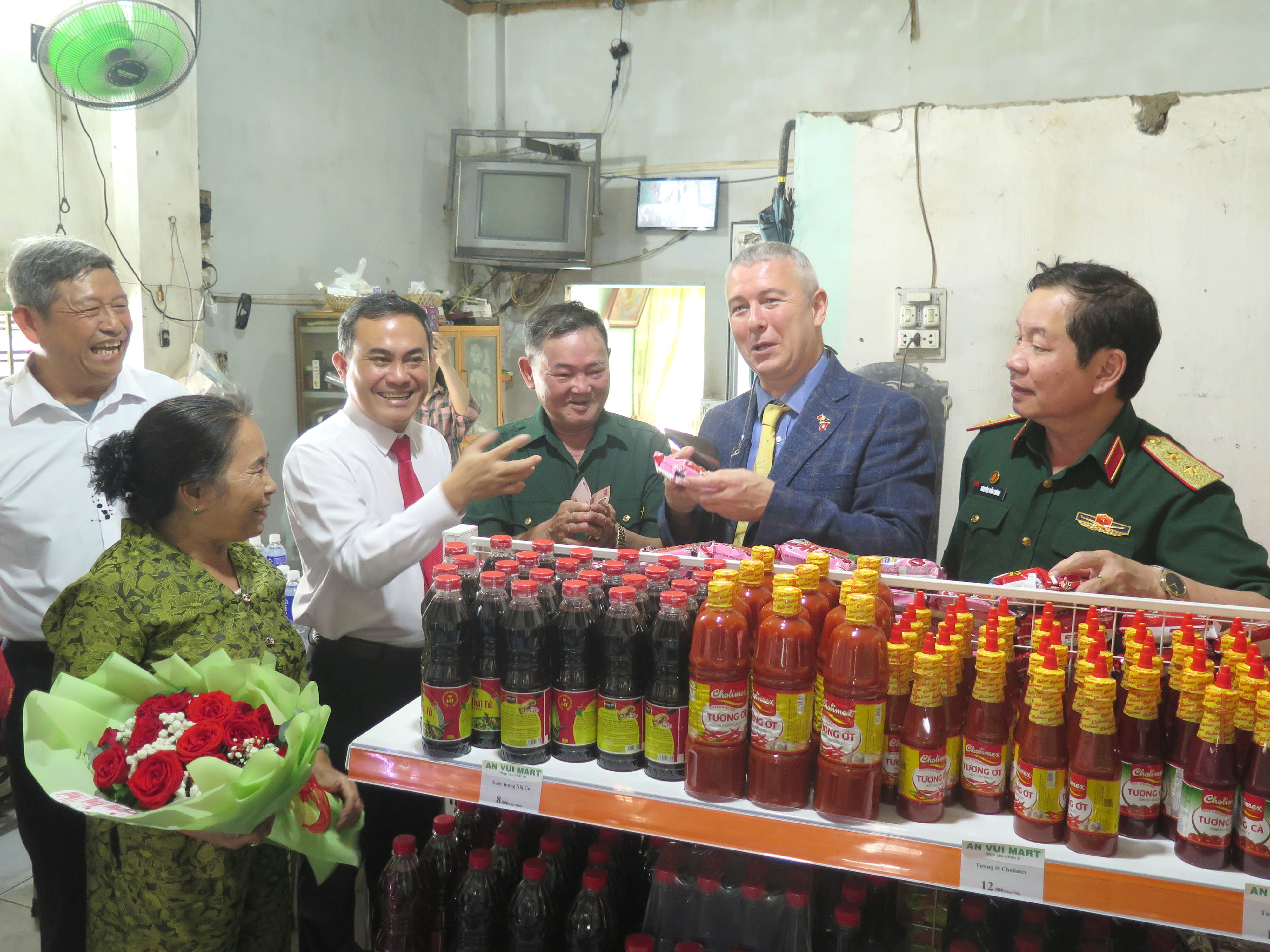


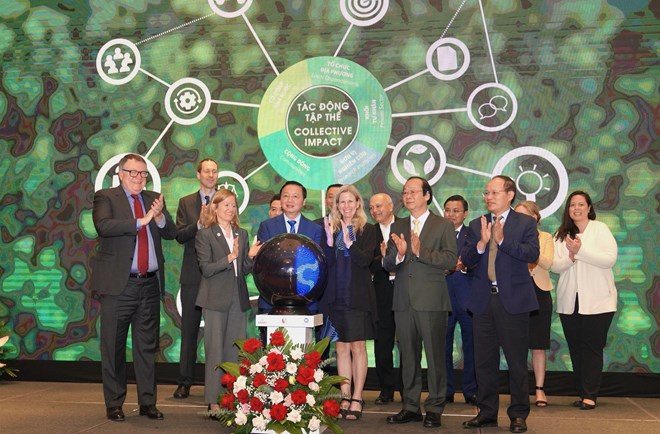




.jpg)
Comment